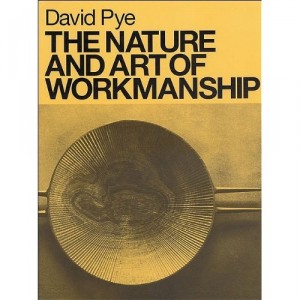Working by hand. Do you work by hand? What does working by hand really mean? Can we afford it anymore?
My definition of working by hand is guiding a tool with your hand and eye. To me this includes both power tools and non-power tools. Does using a jig to guide these tools mean you are now considered a machine? If the jig completely eliminates the craftsmen’s input and judgement, then I’d say yes, the setup is now considered a machine and the worker is now an operator.
What about the process of making the jig? Well, I guess that would be working by hand! This would mean the use of jigs during manufacturing concentrates the painstaking craftsmanship to the initial steps of the project, leaving the actual production little more than an inconvenient bump in the road to the inevitable perfection, right? Do these products of assembly line work and feel better than ones made by hand and how do each affect the lives of the client and the craftsman?
This is a very interesting and touchy subject among the trades, and if you are interested, I highly recommend David Pye’s book The Art and Nature of Workmanship
In this book Pye attacks these very subjective topics and successfully isolates and defines them, leaving the reader with a new perspective on manual labor in their life, the life of others, the changes in labor in our country over the past 100 years and what those changes have done to our society in general.
I will agree with Mr. Pye and argue that we can afford to work by hand, benefiting the client, craftsman, and society with little or no extra cost.
What will we need? This will require a designer willing to distill the client’s wishes down to their essence, a dedicated, skilled craftsman (they need not be different people) and a client that has physical and emotional requirements at least slightly above that of total pragmatism. Or, in English, it means that you need a good designer who is actually working for the client instead of their own self indulgence, a capable craftsman who cares and a client who wants more than absolute basic functionality.
What will we get? The client will get exactly what they want (and not more), and the craftsman and designers will get satisfaction from the meaningful work that they entered the trade for.
How will we do it? The biggest key in this solution is communication between the designer, craftsman, and client. Every client has hopes, dreams, and a budget, but not all clients honestly desire a complicated and exorbitantly expensive piece.
I believe a client’s program of use can be combined with their intended response (be it nostalgia, simplicity, honesty, durability, etc) to give them a piece that fits their needs and makes them feel like they were hoping. If done well, the client will get what they need and at least the minimum they want at a price they can afford.
I can be more specific – there is a delicate balance in every piece between perfection and intention. Intention alone is not enough to make a quality piece of furniture or architecture, but if every cut and surface of a piece is perfect, a lot of intention is lost and we are left with a piece that feels machine made and cold.
This coldness isolates the user from the craftsman, eliminating the first chance of the user has to create a bond with the piece. There is a chance they will create a bond with the piece through use and their own memories, but if they don’t feel great about it right away, they might not keep it long enough to do so.
A simple edge treatment like a hand chamfer might be enough to make an otherwise sterile piece beautiful and meaningful to someone. If that is all they can afford and all they need to be happy, why do more?
This ability to adjust direction and scope so quickly and effectively for each client and job is the reason I believe we can’t afford not to work by hand!

